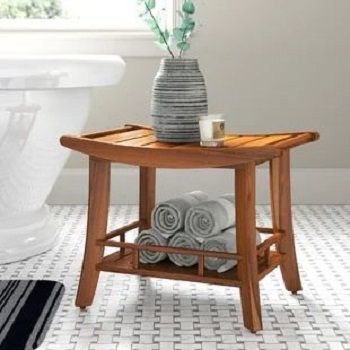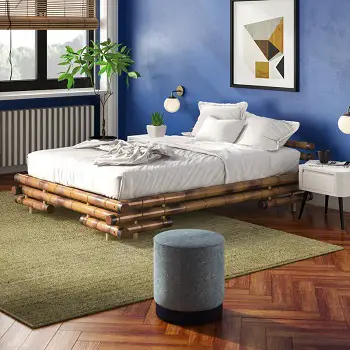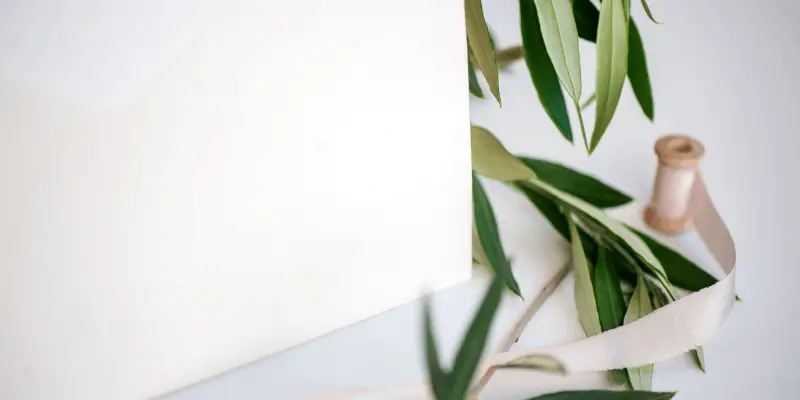Believe it or not, bamboo is used for more than furniture, cutting boards, and eco-friendly toothbrushes. Bamboo silk is a popular material used for bed sheets, tablecloths, and clothes. You may be wondering, what is bamboo silk, or how is bamboo silk made? I put together this helpful guide to answer your questions.
Bamboo silk is a fiber derived from bamboo plants. It’s significantly more durable than regular silk and features antimicrobial and hypoallergenic properties. Bamboo silk is made by working the cellulose of the bamboo plant into a paste. Once dry, the sticky paste is woven into a fiber known as bamboo silk.
Once the silk is made, it looks and feels nearly identical to traditional silk. Besides being extremely durable, bamboo silk is soft, lightweight, and most importantly, significantly less expensive than the silk we’re all used to.
Bamboo Silk
Bamboo silk is becoming a more popular alternative to regular silk because of its abundance, longevity, and lower prices.
The bamboo plant is easy to grow. It does not need replanting. Therefore, it is considered an easy and cost-effective option to get silks. Also, the silk-making process does not demand a lot of effort.
I find that bamboo silk is breathable and often more comfortable than other fabrics. After washing the silk, it gets soft and feels even more comfortable. Don’t expect this benefit from other fibers.
This material absorbs moisture quickly, even faster than cotton. Also, it is wrinkle-resistant and keeps its colors looking fresh and new for a long time.
Bamboo silk is being used for a variety of different products:
- Clothing
- Accessories
- Rug
- Sheets
- Bedding
- Medical Supplies
How Is Bamboo Silk Made?
There are two ways of making bamboo silk, mechanically or chemically. The chemical method is used more often since it’s less expensive.
In the chemical process, all the parts of the bamboo plant are used to make the fabric. A bamboo plant is chopped into chunks and soaked in a chemical solution that extracts the cellulose.
After colors and dyes are added to the cellulose it’s drained of pulp and pressed to create sheets. These sheets will be used to make fibers and those fibers are used to create bamboo silks.
During the mechanical process, the woody parts of the bamboo plant are crushed with natural enzymes to smash the walls into mush. The process will mechanically comb and roll the fibers into the yarn. That yarn is used to make bamboo silk.
Both ways of producing bamboo silk yield excellent results with the mechanical method producing slightly better quality fabric. Also, the mechanical-making process is more environmental-friendly.
The material created with both methods is durable, soft, and stretch-resistant. However, most of the available bamboo silks are made chemically.

Bamboo Silk vs Traditional Silk
The main difference between bamboo silk and traditional silk is the price. Bamboo silk is less expensive than silk however it looks and feels nearly identical.
If you are searching for an alternative of silk at half the price, you will be pleasantly surprised by the quality of its competition.
Bamboo silk dominates the competitor when it comes to durability. Bamboo can last longer than silk. After washing, bamboo silk will feel softer and comfortable.
However, silk might lose its integrity and look after washing for a couple of times. If longevity is your concern, you should go with bamboo silk instead of traditional silk.
Bamboo silk needs more maintenance than silk. You cannot wash them on hot settings. Also, you cannot use a brush to clean any spot. If you use the wrong cleaning method, you might damage the material and affect the durability.
Silk also needs maintenance. However, the maintenance requirement will be less compared to bamboo silk.
Both bamboo silk and traditional silk are extracted and dried. However, bamboo silk grows fast compared to silk. Also, the traditional silk-making process is more complex and time-consuming. But both the silk types look and feel luxurious and soft.
How Do You Clean Bamboo Silk?
You do not need to follow any rigorous cleaning method to clean bamboo silk. You can treat the spots and stains soon after noticing them. In addition to this, you can consider professional cleaning for your bamboo silk rugs once a year.
Also, you should avoid rubbing a stain to clean it. You should not use a brush for addressing any spot as well. Both these cleaning methods will damage the material.
Is Bamboo Silk Durable?
Yes, bamboo silk is durable. However, a little maintenance is required to ensure the durability of bamboo silk products.
You will have to follow the maintenance requirements to boost the longevity of the bamboo silk. Clothes made from it won’t wear out fast and can be washed and dried in a machine. You can place bamboo silk rugs in high-traffic areas with confidence.
The material can withstand heavy foot traffic and heavy furniture. However, if you use traditional silk rugs in heavy traffic areas, you might need to replace them regularly.
With proper maintenance, bamboo silk can last more than five decades. Also, bamboo silk looks impressive and can boost the curb appeal of any home interior.
Summary
Bamboo silk is a more environmentally friendly, durable, and less expensive alternative to traditional silk. The material even outlasts cotton and other skin-friendly fabrics.
It feels super comfortable like cotton and looks exceptional. The super-soft fabric does not cause skin irritation and wicks away the moistures as well. However, you will have to follow the maintenance requirements to maximize the benefits.
Luckily it will need less washing than other materials. Its antibacterial properties will minimize bacteria buildup while making it useful for long without washing.
Bamboo Group is a collaboration of individuals who love the world’s most sustainable and eco-friendly natural material. We believe every home can benefit from the natural colors and patterns of bamboo. We’re excited to see bamboo grow in popularity and get the recognition it deserves. Years of experience growing bamboo plants have taught us a lot we want to share with the world.



